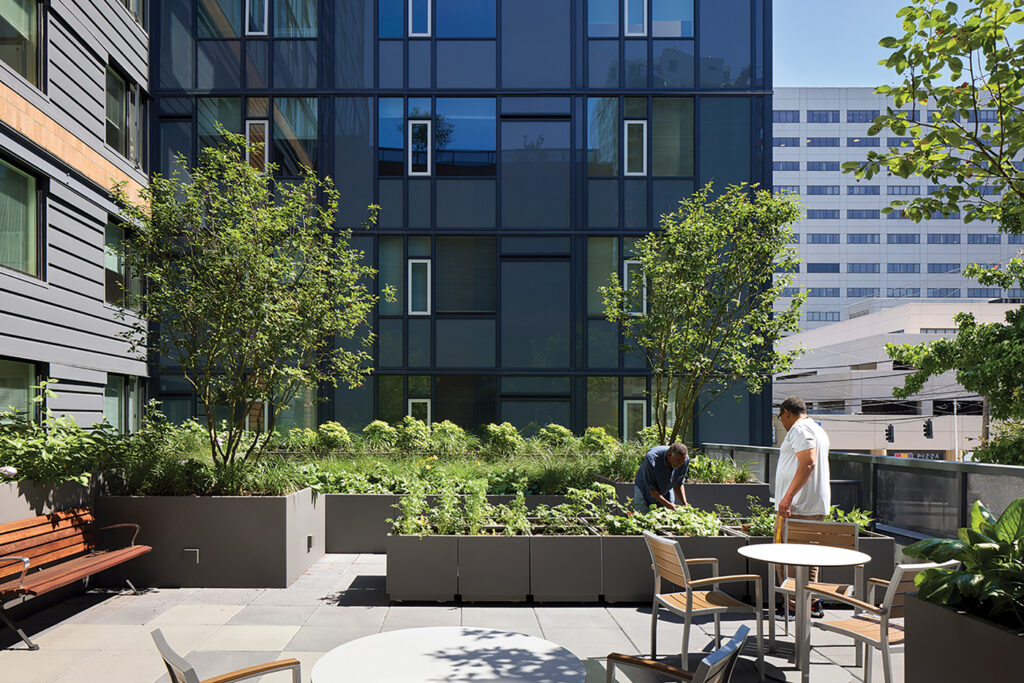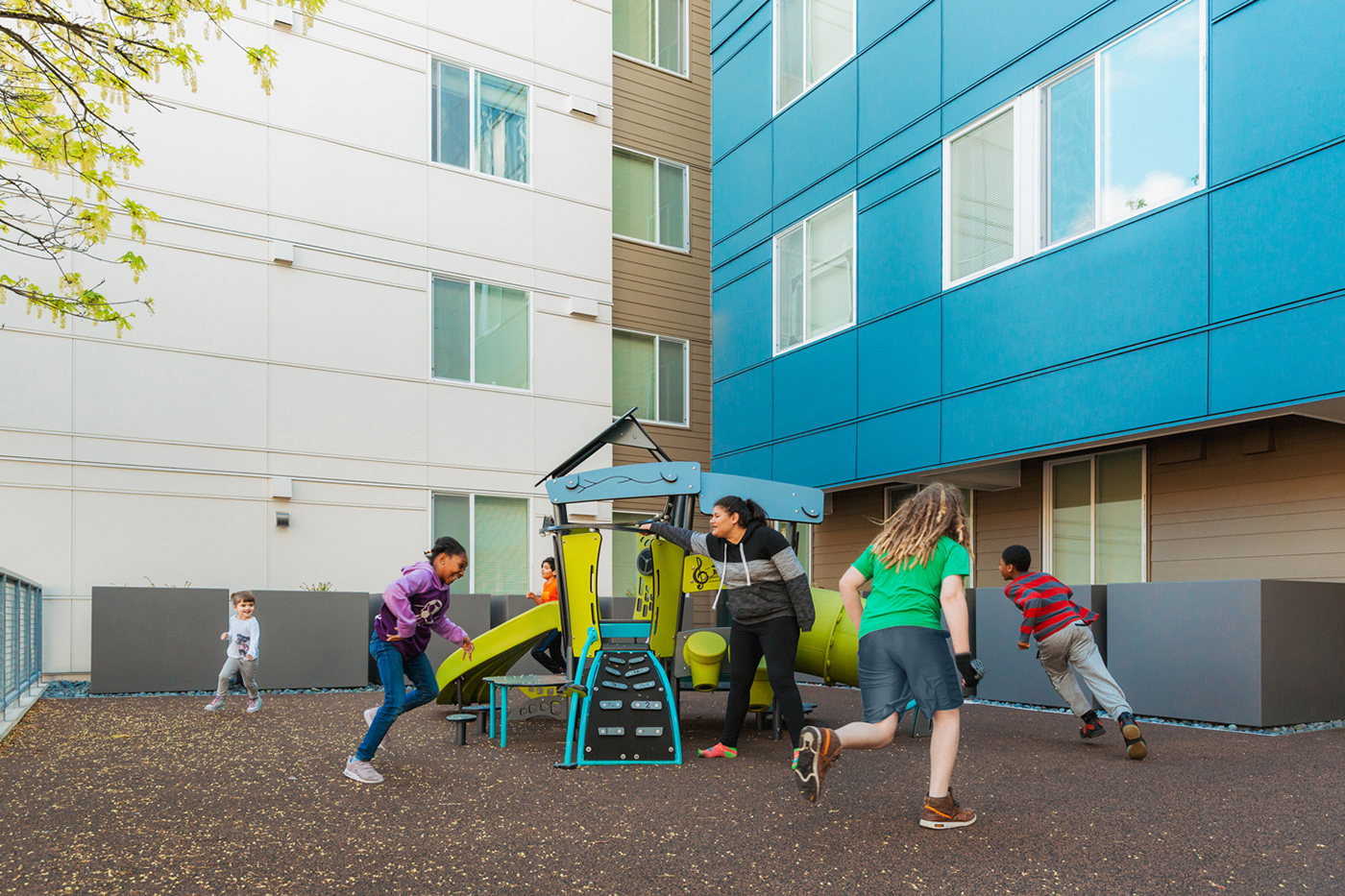Human health and well-being in affordable housing design should begin with crafting connections to nature, healthy indoor environments and spaces that foster community. Biophilic design harnesses the innate affinity humans have for being exposed to nature. Studies have consistently shown that people with access to daylight and views of natural settings thrive better than those who don’t have such access.
 Larger windows bringing natural light into units, corridors and common areas, can provide views out to natural settings whenever possible. Well-designed outdoor spaces and community gardens provide direct access to nature and can encourage physical activity and community building. Bringing the outdoors in, with features like green wall systems, provides the benefits of nature regardless of the weather. We can also specify natural materials and finishes that enhance both personal and community spaces.
Larger windows bringing natural light into units, corridors and common areas, can provide views out to natural settings whenever possible. Well-designed outdoor spaces and community gardens provide direct access to nature and can encourage physical activity and community building. Bringing the outdoors in, with features like green wall systems, provides the benefits of nature regardless of the weather. We can also specify natural materials and finishes that enhance both personal and community spaces.
Tight building envelopes and mechanical ventilation systems required by our new energy codes make indoor air quality even more critical. Adding higher levels of filtration to mechanical systems protects us from outdoor pollutants — but not the products inside our homes. Materials and finishes that bring nature into our homes, such as natural wood and stone, as well as live plants can bring biophilic benefits along with improved indoor air quality.
Designing to combat isolation is just as critical. Humans are social beings. Isolation can lead to downward spirals of mental and physical health, especially for seniors living alone or others who are not working outside the home. We take better care of ourselves when we know other people care about us and depend on us for community activities.
These three simple approaches are powerful tools with proven results. Many decisions, such as the use of natural materials and high-quality gathering spaces, can have two or three benefits at once. If we value human health and well-being, we can’t afford to ignore these simple and effective design strategies.
You can read the original article at www.djc.com


The co-housing option would definitely make a great alternative to more traditional living arrangements, such as group homes for those who have neurological disabilities, conventional assisted living facilities for seniors, and government run housing for low income people.
For people with neurological disabilities, co-housing pocket communities can provide the assistance and support they need with the freedom and privacy that congregate group homes lack.
For seniors, these neighborhoods could offer a more homey atmosphere than large assisted living facilities, not to mention it would be less expensive than conventional assisted living (the average rent at a large assisted living facility is now north of $4000 a month, which most can’t afford)
And for those on low incomes, such neighborhoods could foster a sense of ownership that would likely incentivize the residents to maintain the homes, which in turn would help prevent the neighborhood and the area around it from becoming a crime infested dystopia.
One of the affordable housing alternatives is cohousing. Cohousing is like a typical roommate situation, except that each person usually gets a little house or suite with a private bathroom and sometimes a kitchenette. There’s usually a central kitchen and other facilities for the residents to use. Most cohousing neighborhoods are geared towards people with certain characteristics, such as religion, political philosophy, age, ability or disability, hobbies, etc. The format of these developments lends them well to assisted living, supported independent living (an arrangement similar to assisted living, albeit oriented toward the non-elderly), extended family, mutualism, etc. Most cohousing neighborhoods are also pocket neighborhoods (like the bungalow courts which formerly existed in Los Angeles) in which multiple dwelling units are built on a lot the size of a standard single family lot. There were plenty of pocket neighborhoods in various North American cities, but these were largely killed by the advent of strict single family zoning that also has largely killed off rooming\boarding houses. Fortunately, some municipalities are loosening up zoning ordinances to allow for denser housing like pocket neighborhoods, semi-detached homes, small apartment houses, etc.